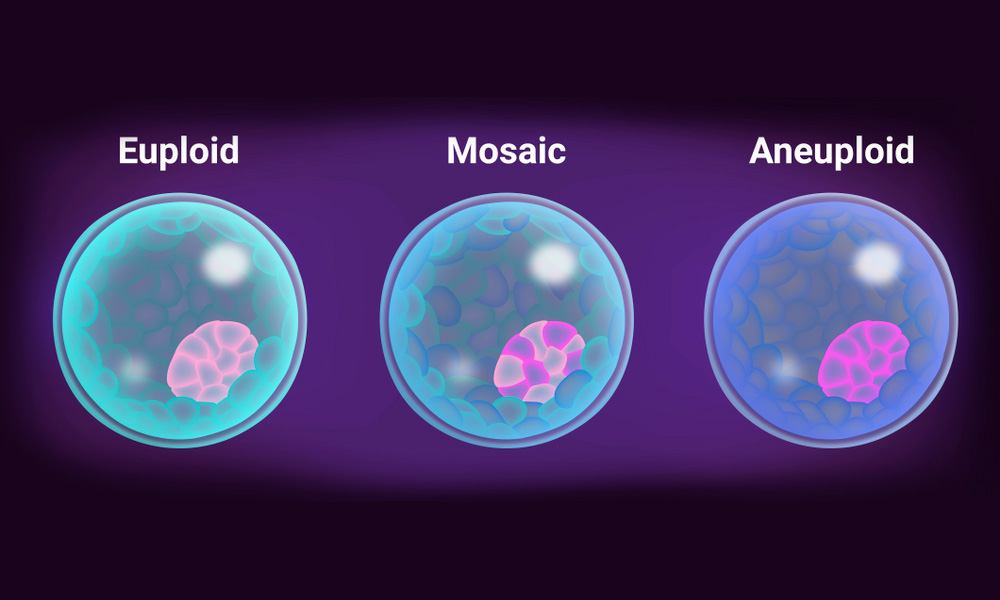
A team from the Reproductive Medicine Department at Dexeus Mujer, led by the embryologist Lluc Coll, carried out a prospective observational study to determine whether the prevalence of mosaic embryos in ART cycles with preimplantation genetic testing for aneuploidy (PGT-A) is associated with the trophectoderm biopsy methodology used. Previous research suggested that the biopsy technique could lead to artefactual results compatible with mosaicism. The study by Dexeus Mujer was conducted in a single IVF-PGT-A setting, between May 2019 and May 2021. Trophectoderm biopsies were analysed by mass sequencing.
Mosaicism was analysed in relation to biopsy methodology (number of laser pulses applied and pulling vs flicking), time from biopsy to sample tubing (min), and time of sample cryopreservation until amplification (days). As a secondary objective, the correlation between the biopsy methodology and the clinical outcome of transferred euploid blastocysts was also studied.
The results revealed that none of the variables analysed is associated with the prevalence of mosaicism. Therefore, the authors concluded that, as long as biopsies are performed following standardised, high-quality procedures, no specific approach increases the incidence of artefactual mosaicism. Likewise, the clinical outcomes obtained after euploid embryo transfers were unrelated to the biopsy methodology.

Reference study:
The effect of trophectoderm biopsy technique and sample handling on artefactual mosaicism
L. Coll, M. Parriego, B. Carrasco, I. Rodríguez, M. Boada, B. Coroleu, N.P Polyzos, F. Vidal, A. Veiga
Assist Reprod Genet. 2022 Jun;39(6):1333-1340. doi: 10.1007/s10815-022-02453-9.
Epub 2022 Mar 16.
DEXEUS CAMPUS
Gran Vía de Carles III 71-75
08028 Barcelona
campus@dexeus.com
(+34) 93 227 47 09
® Copyright 2021-2025 Dexeus Mujer Foundation – Gran Via Carles III 71-75. 08028 Barcelona. Spain
| Cookie | Duration | Description |
|---|---|---|
| cookielawinfo-checkbox-analytics | This cookie is set by the GDPR cookie consent plugin. The cookie is used to store the user's consent for cookies in the "Analytics" category. | |
| cookielawinfo-checkbox-functional | The cookie is set by the GDPR cookie consent to record user consent for cookies in the "Functional" category. | |
| cookielawinfo-checkbox-necessary | This cookie is set by the GDPR cookie consent plugin. Cookies are used to store the user's consent for cookies in the "Necessary" category. | |
| cookielawinfo-checkbox-others | This cookie is used by the GDPR component. It is used to store the user consenting cookies in the "Other" category. | |
| cookielawinfo-checkbox-performance | This cookie is set by the GDPR cookie consent plugin. The cookie is used to store the user's consent for cookies in the "Performance" category. | |
| elementor | ||
| viewed_cookie_policy | The cookie is set by the GDPR cookie consent plugin and is used to store whether or not the user has consented to the use of cookies. It does not store any personal data. |
| Cookie | Duration | Description |
|---|---|---|
| _icl_visitor_lang_js | To allow multi-language functionality for web content. | |
| wpml_browser_redirect_test | Used to verify if cookies are allowed in the browser. |
| Cookie | Duration | Description |
|---|---|---|
| _ga | The _ga cookie, installed by Google Analytics, calculates visitor, session and campaign data and also tracks site usage for the site's analytics report. The cookie stores information anonymously and assigns a randomly generated number to recognize unique visitors. The _ga cookie, installed by Google Analytics, calculates visitor, session and campaign data and also tracks site usage for the site's analytics report. The cookie stores information anonymously and assigns a randomly generated number to recognize unique visitors. | |
| _ga_1WD9MFDMJK | This cookie is installed by Google Analytics. |
| Cookie | Duration | Description |
|---|---|---|
| wp-wpml_current_language | Necessary for the operation of the website in the different languages |